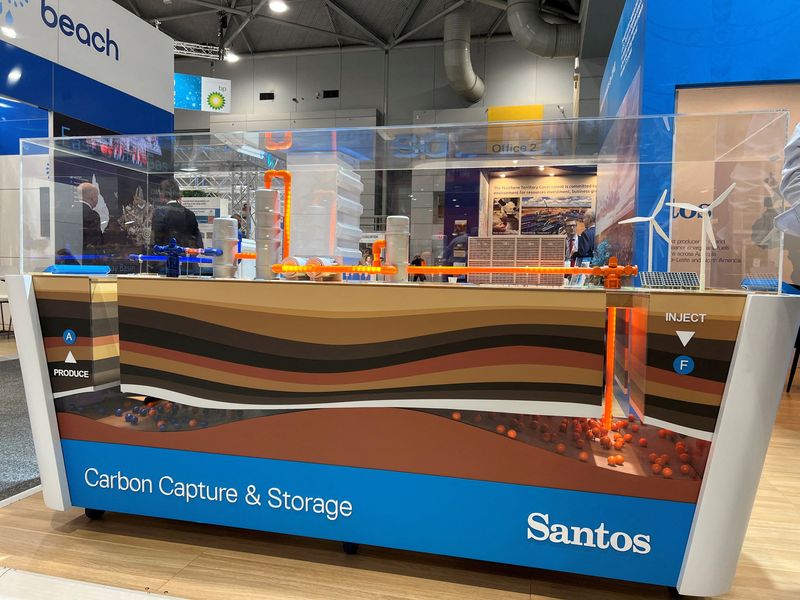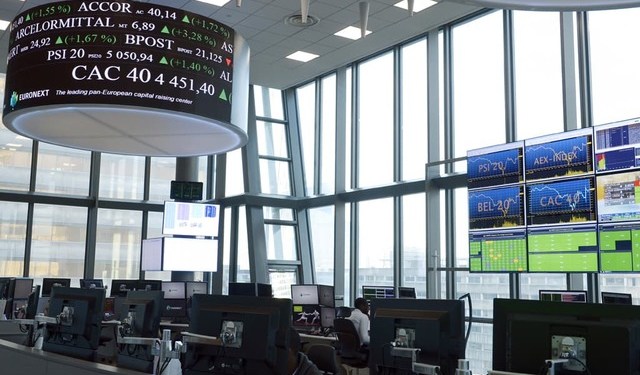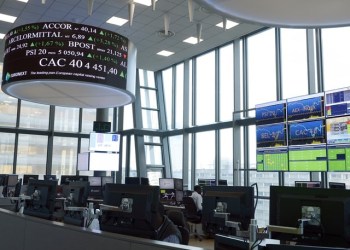
© Reuters. FILE PHOTO: FILE PHOTO: View of a model of carbon capture and storage designed by Santos Ltd, at the Australian Petroleum Production and Exploration Association conference in Brisbane, Australia May 18, 2022. REUTERS/Sonali Paul/File Photo/File Photo
STO
+6.15%
Add to/Remove from Watchlist
Add to Watchlist
Add Position
Position added successfully to:
Please name your holdings portfolio
Type:
BUY
SELL
Date:
Amount:
Price
Point Value:
Leverage:
1:1
1:10
1:25
1:50
1:100
1:200
1:400
1:500
1:1000
Commission:
Create New Watchlist
Create
Create a new holdings portfolio
Add
Create
+ Add another position
Close
WDS
-0.53%
Add to/Remove from Watchlist
Add to Watchlist
Add Position
Position added successfully to:
Please name your holdings portfolio
Type:
BUY
SELL
Date:
Amount:
Price
Point Value:
Leverage:
1:1
1:10
1:25
1:50
1:100
1:200
1:400
1:500
1:1000
Commission:
Create New Watchlist
Create
Create a new holdings portfolio
Add
Create
+ Add another position
Close
(Reuters) – Australia energy companies Woodside (OTC:WOPEY) and Santos Ltd said late on Thursday that they are in preliminary merger talks, in what could be the latest big deal in a wave of global consolidation the in oil and gas sector.
A potential combination of the companies, which together have a market value of about $52 billion, comes amid challenges faced by both in their domestic projects from Indigenous people as well as rising pressures of decarbonisation.
Both companies have seen their share performance lag global peers.
CHALLENGS
Woodside in October cut its its 2023 production outlook and missed third-quarter revenue estimates, while it was ordered by the Australian federal court to seek new approval to conduct seismic blasting under the seabed for its $12 billion Scarborough gas project after a legal challenge by an Indigenous woman.
Santos is contending with legal challenges from a traditional land owner from the Tiwi Islands on undersea pipeline works for its $3.6 billion Barossa gas project and has forecast lower output in 2024 as its Bayu-Undan gas field reached the end of its life and its West Australian offshore field’s output declined.
Below are key details on both companies, including production and reserves measured in million barrels of oil equivalent (mmboe):
Woodside Santos
Market cap ($ in billion) 37.39 15.56
Revenue ($ in billion)
16.9 7.8
2022
Production (mmboe) Domestic 136.6 61.3
International 21.1 41.9
Total 157.7 103.2
Proved plus probable reserves (mmboe) 3,640.3 1,745
2023-24
Production forecasts (mmboe)
183-188 (2023) 84-90 (2024)
ASSETS AND PROJECTS
Woodside
Woodside operates major liquefied natural gas (LNG) export facilities in Australia, including North West Shelf and Pluto LNG, and three floating production storage and offloading (FPSO) facilities in western Australia. The company also owns a stake in the Chevron-operated Wheatstone LNG project.
The company is involved in oil-gas joint ventures in the Bass strait and partners with Santos at Macedon, a gas field off western Australia. Woodside has been trying to sell ageing domestic oil and gas assets where production is declining and high decomissioning costs are required.
The company received approval for its Scarborough and Pluto Train 2 projects in Australia in 2021, with first LNG cargo expected in 2026.
Globally, Woodside operates in the U.S. Gulf of Mexico with three offshore platforms, as well as an offshore processing facility in Trinidad and Tobago.
In Senegal, Woodside is targeting first oil production at the Sangomar Field Development Phase 1 in 2024. Woodside has also made a final investment decision to develop the large, high-quality Trion resource in Mexico, with first oil output targeted for 2028.
Other Woodside projects include proposed hydrogen and ammonia projects H2Perth and H2TAS in Australia and another hydrogen project, H2OK, in North America.
Santos
Santos operates Gladstone LNG and holds a stake in Papua New Guinea LNG.
The company expects production at the Timor-Leste Bayu-Undan field to cease in 2025 and plans to backfill Darwin LNG with supply from the Barossa field.
Santos is the second-biggest producer of domestic gas in Western Australia and has invested in two offshore oil fields, Van Gogh and Pyrenees.
On the Australian east coast, Santos portfolio includes the Cooper and Eromanga Basins as well eastern Queensland production.
In the U.S., Santos is advancing its Pikka Phase 1 project in Alaska, expecting first oil production in 2026.
Combined
If the companies merge, they would have a 26% share of Australia’s east coast gas market.
Combined oil and gas production in 2022 for the two totaled slightly over 260 million barrels of oil equivalent (mmboe), and their total proven plus probable reserves are 5.39 billion mmboe, based on data from the companies.
The Australian Competition and Consumer Commission (ACCC) said on Thursday it would consider whether a public merger review into the impact on competition was required if the deal goes ahead.
“Given ACCC’s focus on East Coast gas, we expect a (merged company) may be a forced seller of the Cooper Basin,” Macquarie bank analyst Mark Wiseman said in a note.
($1 = 1.5154 Australian dollars)
Source: Investing.com



























